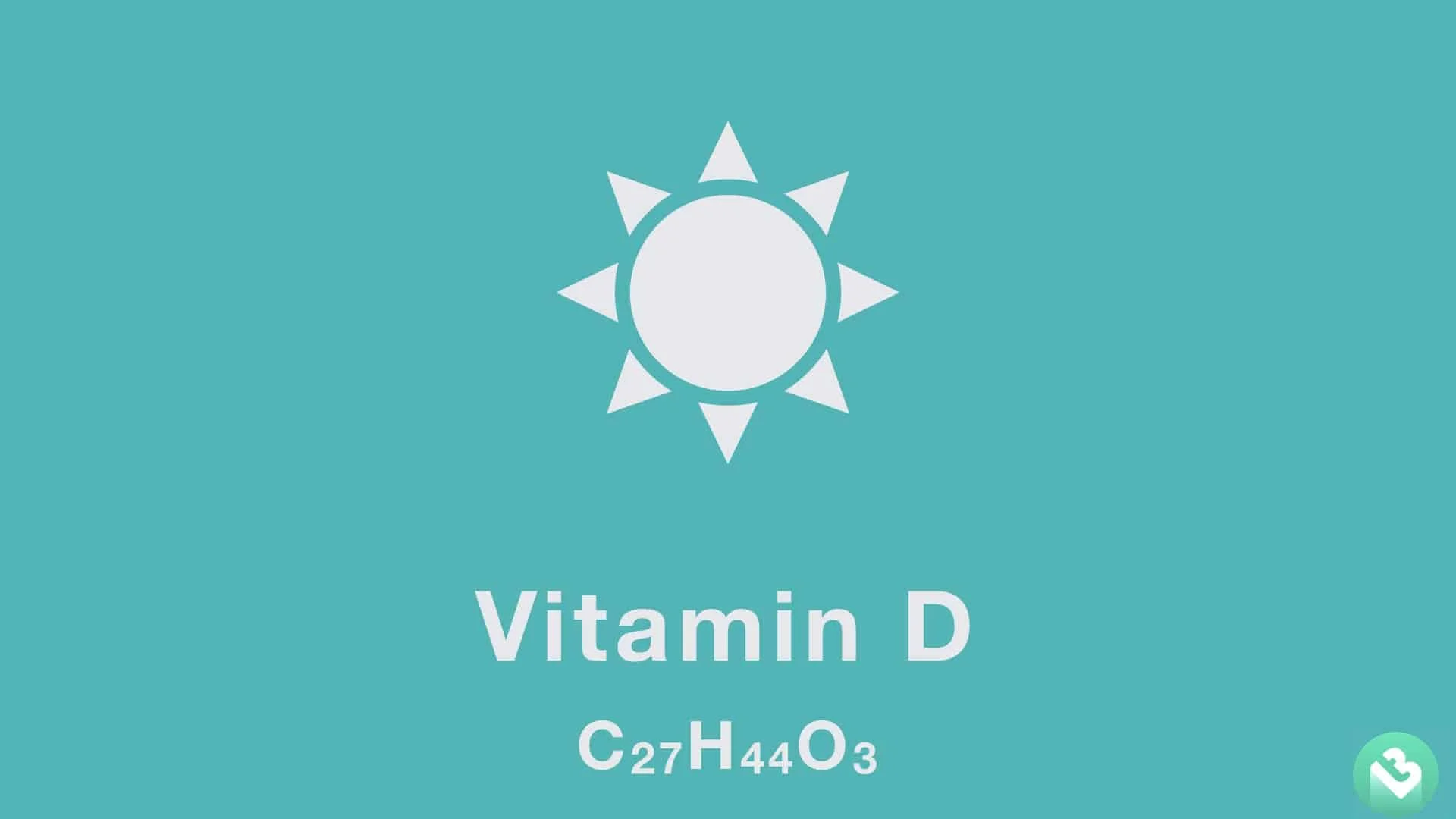What is Vitamin D?
Vitamin D, also referred to as the “sunshine vitamin” is a fat-soluble vitamin that is crucial for a host of vital functions in the body. Vitamin D is needed by every single cell in your body.
Our body typically synthesizes vitamin D in our skin when exposed to sunlight. Some foods, like fatty fish, oysters, and egg yolks, are natural sources of vitamin D.
Because most of us do not spend enough time outdoors or deal with other interfering factors, vitamin D deficiency is at epidemic levels. At least three-quarters of Americans are deficient in this important vitamin. (1)
What Does Vitamin D Do?
Supports Healthy Bones and Teeth
One of the most important functions of vitamin D is its role in regulating and enhancing phosphorus and calcium absorption and utilization in the body. These minerals, and the body’s ability to use them properly, are vital for the formation and maintenance of healthy and strong bones and teeth.Weight Loss
Supports Healthy Immune Regulation
Adequate vitamin D is necessary for optimal immune regulation. Vitamin D helps keep our immune system strong and active to ward off unwanted invaders. Research has shown that optimal vitamin D levels play a crucial role in their body’s resistance to seasonal pathogens like influenza. It also modulates the inflammatory response to ensure the body is responding appropriately thereby reducing the health risks of chronic systemic inflammation and autoimmune response. (2, 3)
Supports Mental Health
Vitamin D is important for healthy brain function and mood regulation. Optimal vitamin D levels have been found to be effective at reducing the risk symptoms of depression and anxiety. (4, 5)
What Happens If Your Vitamin D is Too Low?
Symptoms of a vitamin D deficiency can often be difficult to evaluate because they can masquerade as many other issues. As a result, the effects of a vitamin D deficiency can be insidious and debilitating. Here is a list of eight signs and symptoms of a vitamin D deficiency that are common but often missed.
1. Poor Bone Health
Bone loss (in adults) and poor bone formation (in children) can be symptoms of vitamin D deficiency. Calcium supplementation is one of the first things people think of to help ensure strong bones, but the body needs adequate vitamin D to be able to use the calcium consumed through diet and supplements for it to be useful.
Rickets, a condition resulting in soft and malformed bones, is a symptom of vitamin D deficiency in children. Research has shown a strong link between low bone mineral density and lower vitamin D levels in middle-aged and senior women, a group already at high risk of bone deterioration. (6)
2. Frequent Illness and Infection
Because vitamin D plays such a crucial role in healthy immune function, vitamin D deficiency can lead to frequent or recurrent illnesses and infection.
Seasonal illnesses like cold and the flu tend to come on during the winter, when we are exposed to less sunlight and our vitamin D levels are lower.
There is significant research to show a strong link between vitamin D deficiency and respiratory illnesses, especially influenza, and that maintaining optimal vitamin D levels reduces your risk of infection. (7, 8)
3. Chronic Pain
Joint and bone pain is a common symptom of vitamin D deficiency that often goes unrecognized or attributed to another cause.
Those with low amounts of vitamin D have been found to be twice as likely to experience generalized bone and joint pain, especially in women. When considering chronic back pain, vitamin D deficiency is a culprit there, too, with increased pain levels and greater interference in day-to-day activities. (9, 10)
4. Fatigue
Fatigue is such a general symptom that can be caused by so many things, it’s easy to miss as an effect of a vitamin D deficiency. Studies have shown that there is a strong correlation between fatigue and very low levels of vitamin D, especially in women. This leads to difficulties in daily living and reduced quality of life. Symptoms were found to improve with vitamin D supplementation. (11, 12)
5. Mood Disorders
A depressed or anxious mood can both be symptoms of a vitamin D deficiency. We have many vitamin D receptors in the part of our brain that regulates mood. When we are deficient in vitamin D, it makes it difficult for our brain to regulate our mood, leaving us more susceptible to mood disorders.
Research has found that vitamin D supplementation improves mood in those who are deficient and experiencing depression. Likewise, low vitamin D levels have been found in those dealing with anxiety disorders, as well. (13, 14)
6. Slow Healing
If you find that wounds and injuries take longer than they should to heal, you may be deficient in vitamin D. Vitamin D is important for regulating our inflammatory response to injury. Higher levels of inflammation make it more difficult for tissues to heal properly. Lack of vitamin D can interfere with the formation of new health tissue in wounds, and it can even impair dental surgery outcomes for up to a year later! (15, 16, 17)
7. Hair Loss
Hair loss can be caused by many issues, but hair loss is a symptom of vitamin D deficiency. Alopecia is an autoimmune disease that results in severe hair loss and is strongly associated with rickets. Vitamin D deficiency plays a role in both increased risk of autoimmune disease and is directly responsible for rickets. Research has found the lower one’s vitamin D levels, the worse alopecia hair loss is. (18, 19)
8. Neurological Issues
Chronic muscle weakness and nerve pain is at an all-time high and causes can be difficult to determine. One cause that is often overlooked is vitamin D deficiency. Muscle pain can be a sign of vitamin D deficiency in adults and children. The nerves in the body that sense pain contain vitamin D receptor sites. When vitamin D is lacking, these nerves can begin to become hypersensitive to stimulation resulting in increased pain levels.
In vitamin D deficient children with growing pains, vitamin D supplementation improved pain scores by over 50%. In another observational study, over 70% of adults with chronic pain were found to be vitamin D deficient. (20, 21, 22, 23)
Can Lack of Vitamin D Cause Weight Gain?
This is a common question, and the evidence suggests vitamin D deficiency can cause weight gain. Vitamin D deficiency is more common amongst overweight individuals and even modest amounts of weight loss improve vitamin D levels in the body. Vitamin D supplementation, together with diet and exercise changes, has been found to accelerate weight loss in women over diet and exercise changes alone. Maintaining optimal vitamin D levels is linked to less weight gain over time. So if your healthy living weight loss efforts are having difficulty getting off the ground, or you seem to have stalled out, addressing a potential vitamin D deficiency could have positive results on your weight management. (24, 25)
What Causes a Vitamin D Deficiency?
Now that we know what symptoms of vitamin D deficiency look like and how serious they can be, it is important to look at the causes of vitamin D deficiency.
The chief cause of vitamin D deficiency is lack of time outdoors with skin exposure to direct sunlight. This is especially a concern in northern climates where it can be very cold with very little or very weak sunlight for months of the year.
Our body’s ability to make vitamin D also declines as we age, which is a common cause of vitamin D deficiency in our elderly population.
Living in high-density urban areas with high air pollution can impede your ability to get sufficient vitamin D. Air pollution blocks sunlight from reaching your skin, not to mention that it is toxic in general. Living near tall buildings that block sunlight much of the day also contributes to the problem.
Regular use of sunscreen can also be a significant contributor to vitamin D deficiency. While sunscreen may be effective at helping prevent skin cancer, by blocking the sun’s rays, it also interferes with the body’s ability to manufacture vitamin D from sunlight.
Those of us with darker skin are at higher risk of developing vitamin D deficiency. The higher the melanin levels in your skin, the more sun exposure your skin needs to produce vitamin D. African Americans are at the highest risk for vitamin D deficiency for this very reason.
How to Correct a Vitamin D Deficiency?
If you believe you are suffering from a vitamin D deficiency, a good first step is to have your vitamin D levels checked by a healthcare professional. It is a simple blood test for vitamin D that measures the concentration of vitamin D in your blood. Current recommendations are for vitamin D levels to be between 50-100ng/dL for optimal health.
How can I raise my vitamin D level quickly?
Thankfully, there are several affordable and effective options that are readily available to help increase vitamin D levels and get you feeling your best.
Sun or UV Light Exposure
The most obvious option is to increase exposure to sunlight if possible. The body uses cholesterol in the skin to make vitamin D in response to ultraviolet B (UVB) light exposure. Direct sun exposure on the skin is one of the best ways to get the vitamin D your body needs.
The key here is to do so without the use of sunscreens that prevents the UVB rays from reaching your skin. Skipping the sunscreen or using some of these safe sunscreen alternatives will help your body make the best use of the sun exposure.
If adequate sun exposure is a challenge, treatment of vitamin d deficiency with UV light is also an option. Research has shown a UVB light to be a useful and effective tool to treat a vitamin D deficiency. (8)
Consume Vitamin D Foods
In parts of the world where it is impossible to get vitamin D from sunlight alone and the risk of vitamin D deficiency is quite high, traditional cultures have relied on foods rich in vitamin D to maintain their vitamin D levels.
Fatty fish is one of the best dietary sources of vitamin D you could ask for. Wild caught salmon is delicious and generally available. One 3.5oz serving of wild salmon will provide, on average, nearly 1,000IU of vitamin D. Herring provides even more at over 1,500IU of vitamin D per 3.5oz serving. Oysters, shrimp, pastured egg yolks, and grass-fed beef liver are also good choices to boost your intake of vitamin D. (9)
Supplementation
UV light exposure and vitamin D foods are not enough for most people in our society to reach optimal vitamin D levels and prevent vitamin D deficiency. Vitamin D supplementation is a convenient, effective, and affordable way to help raise vitamin D levels fast.
The dosage for treatment of vitamin D deficiency will depend on the person, how deficient they are, and other underlying medical conditions that could be negatively affecting their vitamin D levels. How long it takes to correct a vitamin D deficiency will also be influenced by these same risk factors.
Vitamin D dosage is measured in international units (IU) or micrograms (mcg). Most functional health sources recommend 5,000IU or 125mcg of vitamin D3, the active form of vitamin D, per day to support optimal vitamin D levels and optimal health benefits.
When supplementing with vitamin D, it is important to also supplement vitamin K2, as well. Vitamin K2 is a cofactor of vitamin D, meaning they work synergistically together for best effect. The body needs K2 to be able to use supplemental vitamin D properly. The research is not settled on dosing for vitamin K2, but most sources recommend 100-200mcg per day.
It is best to take your vitamin D supplement in the morning or around midday. This is when the body is designed to make best use of the highest vitamin D levels. It coincides with when we would naturally have the strongest sunlight exposure if we were outdoors. Some sensitive individuals report a stimulating effect from vitamin D supplementation which can interfere with a good night’s sleep.
How to Choose a Vitamin D Supplement
Supplemental vitamin D comes in a variety of formats including pills, gel capsules, drops, creams, and topical patches. Whatever form you choose, you want to make sure it uses safe, quality ingredients free from unnecessary additives and fillers. Using a combination of vitamins D and K2 will eliminate the need to supplement each separately and save you money in the long run. Since the body is naturally designed to synthesize and utilize vitamin D from the skin, topical vitamin D supplements are a fantastic option. Our Vitamin D3 and K2 Patch contains the recommended 5,000IU of vitamin D3 and 200mcg of K2 making it a good fit for addressing your vitamin D needs.
If these strategies fail to meaningfully improve your vitamin D levels, you may want to work with your care provider to evaluate other potential underlying health issues.
This site does not provide medical advice It is intended for informational purposes only. The content is not a substitute for professional medical advice, diagnosis or treatment. Never ignore professional medical advice in seeking treatment because of something you have read on the PatchMD website. 2020 All rights reserved, this site uses cookies.
Other Resources:
- Supplements for Acne
- The Best Foods for Anti-Aging, Optimal Health, and Youthful Skin
- Weight Loss Simplified: The Best Bariatric Vitamins to Aid Your Weight Loss
- Fat-Soluble vs. Water-Soluble: Comparing Vitamins’ Absorption Abilities
- Everything You Need to Know About Taking Topical Biotin
- Magnesium for Anxiety: What You Need to Know









Leave A Comment
You must be logged in to post a comment.